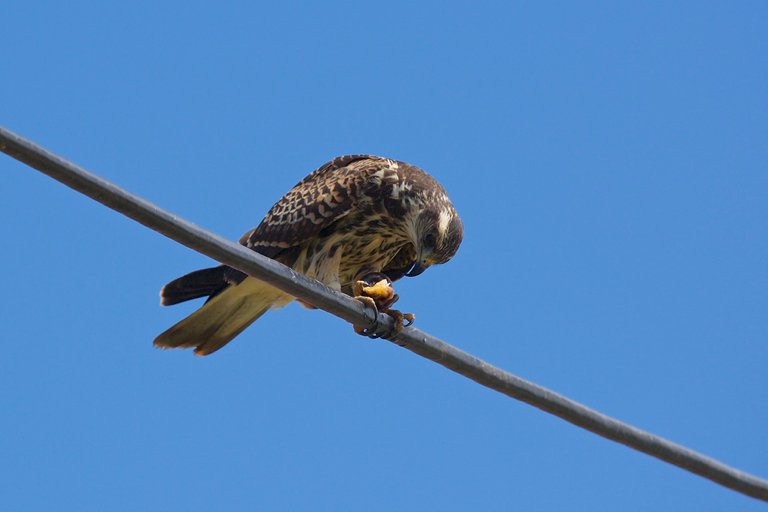
It's obvious why the Snail Kite is called a snail kite. It's a specialised snail eater; a molluscivore. Its main diet consists of large apple snails and there are plenty of those in the canals nearby. That's why I see them often and since they are not that shy it's quite easy to photograph them.
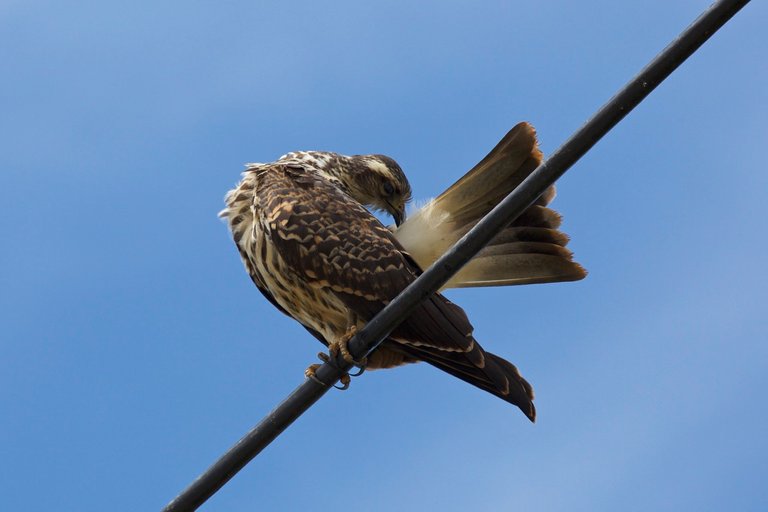
After a nice meal it's time to do a bit of grooming. This is a female snail kite, strangely enough I never see the males who are blue-grey. These pictures are from last year. I already have so many pictures of this bird that I'm not actively photo-hunting to get more. Except when something interesting happens, like in the next picture.
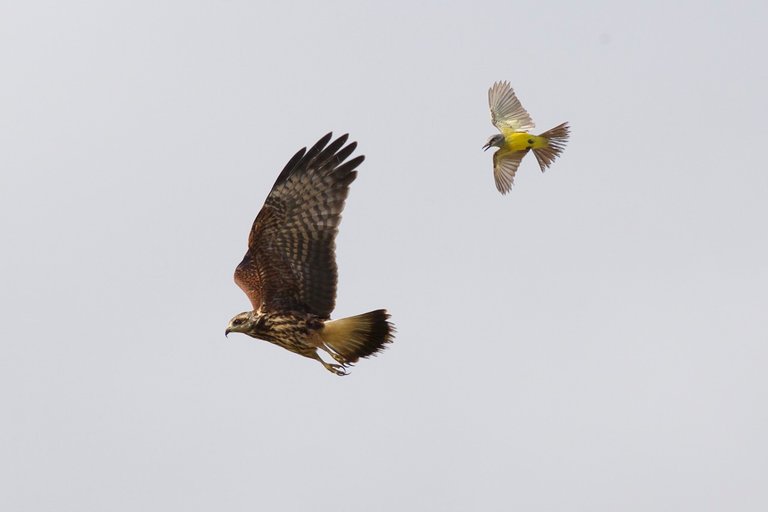
The poor snail kite is being chased away by a tropical kingbird. The kingbird can be very bossy and it defends its territory ferociously. Not that the kingbirds have anything to fear from the snail kites. They are no threat at all, unless you're a snail of course. It finds these snails by flying low and slow over the canals. After it picks one up it flies usually to the same spot to eat them and that's often on a wire.
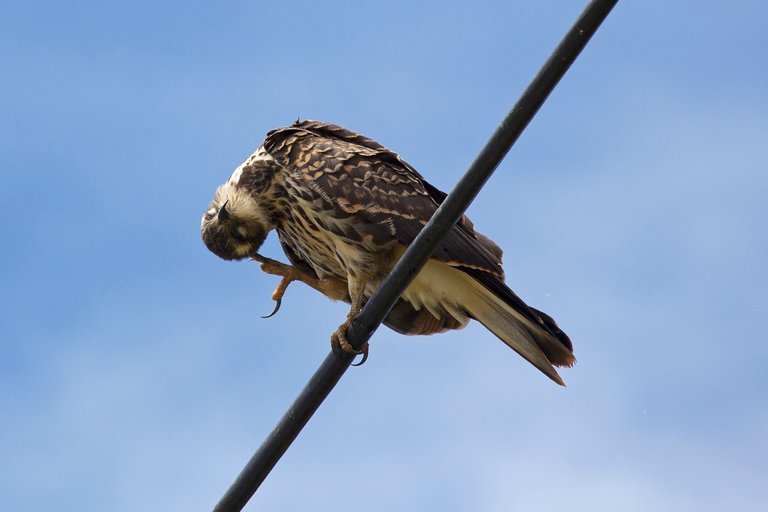
I've not counted the amount of snails they devour in a day but it must be dozens. If there are not enough snails available it will eat other prey like crayfish.
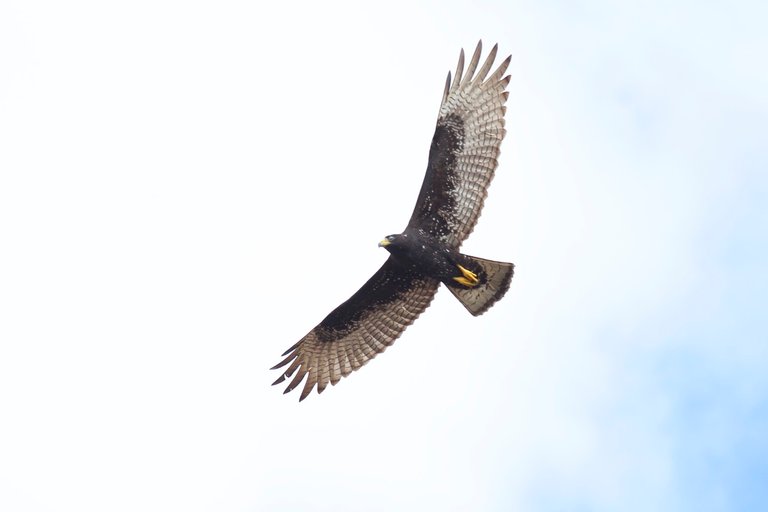
When I went through my pictures of this beautiful hawk I saw that I made a mistake. I thought that the bird in the picture above was a male snail kite but it's not. I think it's a Zone-tailed Hawk (Buteo albonotatus) but I'm not sure. If it it is than it must be a juvenile because they have white spots on their breast and the bands (zones) on its tail are less developed. Maybe @birdbanter can help me identify this bird.
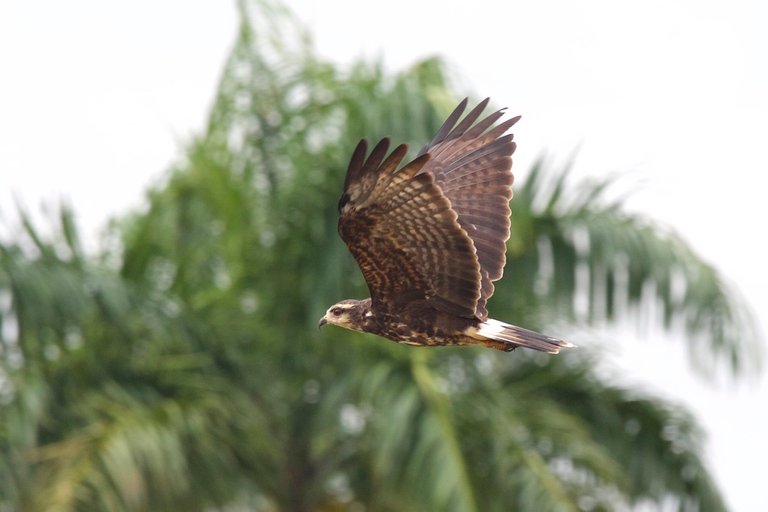
The snail kite has an extensive range and breeds in tropical South America, the Caribbean, and central and southern Florida in the United States. It's not threatened except locally. Like in Florida where there are not enough snails due to water level control.
Thanks for visiting my blog and happy birding.

Great photos. I love this species. In the U.S. they are an uncommon Florida specialty.